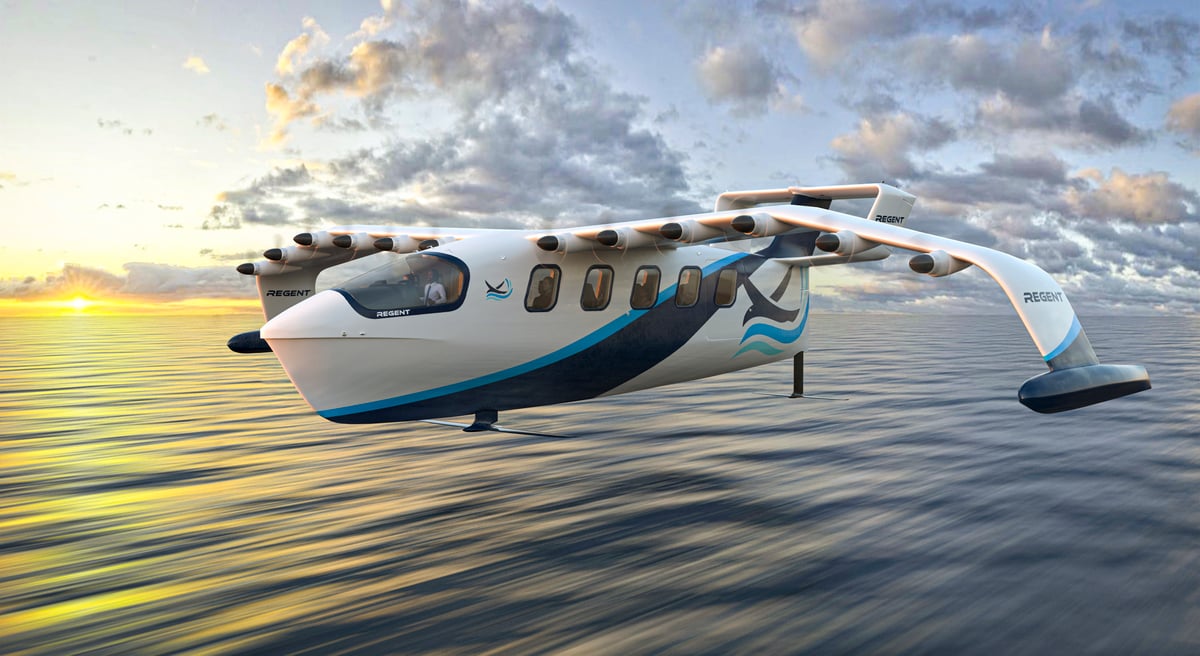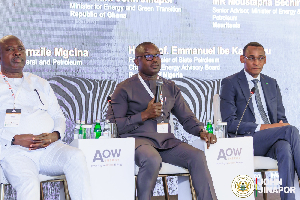World’s largest electric flying machine with top speed of 180mph – study planned for Orkney
By Alastair Dalton
Copyright scotsman

A new type of craft that glides over the water would transport passengers between islands in Orkney under a planned feasibility study into the concept. The Viceroy Seaglider vessel can carry 12 people and two crew and operate as a boat, hydrofoil or the world’s largest electric “flying machine”. The aircraft is nearly 17m long, with a 20m wingspan, top speed of 180mph and range of 180 miles. It can also carry 1,600kg of cargo. The Seaglider’s “hydrofoiling wing-in-ground effect” enables it to combine “the speed of an aircraft with the convenience of a boat”, according to its developers, who said it was quieter than an aircraft or helicopter. US firm REGENT Craft (Regional Electric Ground Effect Nautical Transport) said it was in the “early stages” of a collaboration with the Highlands and Islands Transport Partnership (Hitrans) co-ordinating body over a feasibility study. The agency said: “There is potential for trials in the future, but nothing concrete at this stage.” Orkney is served by a fleet of ageing council-run ferries and inter-island flights operated by Loganair, which include the world’s shortest scheduled service of 90 seconds over the 1.7 miles between Westray and Papa Westray. The project comes as the latest development in Orkney’s role as a test bed for electric and hydrogen aircraft. Hitrans said the partnership was part of its work on the capability of new sustainable aviation technologies. David Holden, its regional sustainable aviation manager, told The Scotsman: “We are keen to see where connectivity could be significantly improved with aircraft that not only contribute to a lower carbon footprint, but also, potentially, offer more accessible and lower-cost connections. “We see REGENT as a fascinating emerging prospect and we want to work with them to initially evaluate the impact such craft could bring to the region, how it would be optimised and integrated into current systems and eventually hope to support initial trials and entry to service here. “I believe the region is as far forward as anywhere globally in understanding the potential benefits of a wide range of sustainable technologies, REGENT being one of the most impressive.” Mr Holden said Hitrans would look at a mix of routes to see how such new technologies “can be integrated together to significantly improve current connectivity“. The body is helping to develop a regional sustainable aviation strategy for the Highlands and Islands, which he said would provide “a road map for new technologies to enter service in the region and quantify the commercial and social benefits that the improved connectivity will deliver”. Scotland relies on its transport links – stay informed with our Transport newsletter Adam Triolo, REGENT’s commercial business development vice president, said: “Our work with Hitrans is an exciting opportunity to showcase to Scotland and the Highlands’ communities the potential human and environmental benefits Seaglider vessels could have on coastal transportation. “The Seaglider technology is an all-electric sustainable solution that could transform the way people transit this area of natural beauty. “The Hitrans team are leading an important and innovative mission in the region and we look forward to growing this partnership together.”



